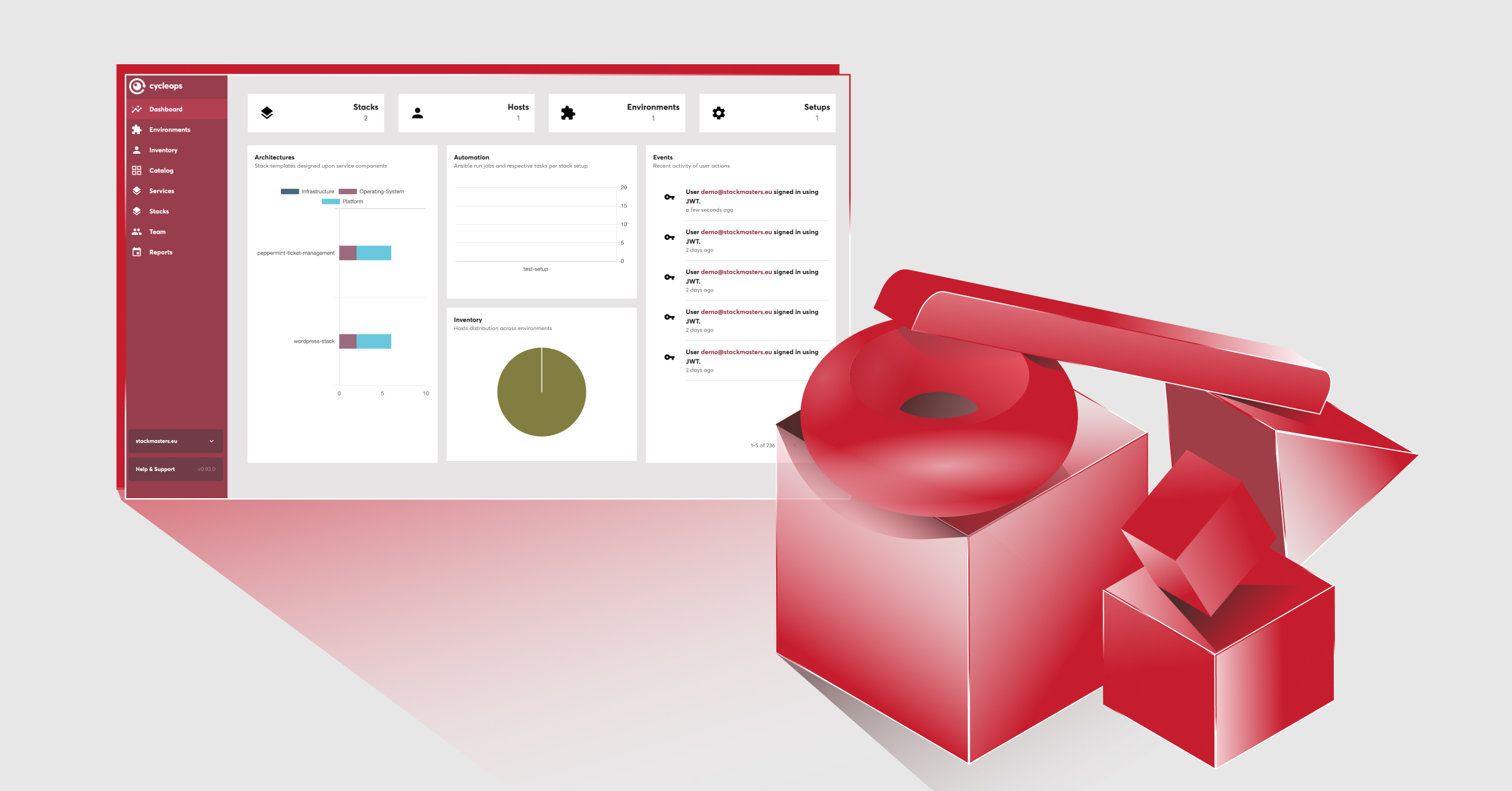Software and applications have been changing rapidly, in the last few years. So much so, that most companies struggle to keep up with the processes needed to support them, throughout their lifecycle. However, getting this right, requires using the right tools; and, of course, setting up an effective plan. This is where Centralized Configuration Management comes in, to keep track of changes, and allow for quick feature updates, without any service disruptions.
What is Centralized Configuration Management?
In simple terms, Centralized Configuration Management is the process of overlooking the state of systems, servers and software from a central dashboard, to ensure that everything performs as expected; and, of course, act promptly if an issue emerges.
Be that as it may, managing configurations requires a high degree of automation. To explain, automation helps streamline this process, and keep systems robust; in Cycleops, for instance, we use an Ansible-based automation engine.
To elaborate, by integrating an automation tool into your Configuration Management practice, you can:
- create effective check-in policies
- avoid redundancies
- minimize the possibility of omissions, due to human error
- maintain assets in the desired state
- make systems scalable
Is Centralized Configuration Management necessary?
If you’ve adopted the SaaS (Software as a Service) model, well, then, a Centralized Configuration system is essential to manage all the aspects of your business. In case you’re wondering why: Simply because your product is software. And, as it happens with software, a misconfiguration is often the cause of downtime or even security incidents.
Indeed, configurations are what will make your systems work in perfect order. With a Centralized Configuration plan up and running, you’ll have a structured process for developing, releasing, and — if the need arises — changing any of the requirements in your software.
Keep in mind, using configuration tools is a big part of this plan, as they help mitigate risks. Some key benefits of using a Centralized Configuration Management tool include, but are not limited to:
- Determining that your system or configuration items meet their functional requirements (configuration audit)
- Creating a sandbox environment for testing and bug fixing; or accommodating a change request
- Improving overall Operations
- Automating configuration policies for immediate remediation
- Reducing cybersecurity risks
- Minimizing downtime
- Ensuring a seamless user experience (UX)
- Contributing to the scalability of your software
What can Cycleops do for you, as a Centralized Configuration Management tool?
It should be clear by now that integrating Centralized Configuration Management is vital for the reliability and scalability of your software. A Cloud Management Platform that allows for self-service DevOps, like Cycleops, can greatly help in that direction.
In a nutshell, here is how you can keep a smooth Centralized Configuration Management practice, as a CIO, with Cycleops:
- Administrate custom configuration settings, to enable seamless change control and monitor configurations
- Share and reuse configuration settings among your team or across different teams
- Define the desired baseline configuration
- Apply best practices in version control
- Gain visibility, with full-stack monitoring
- List and review all your configured services
- Prevent downtime and data breaches
- Improve release management
- Enhance system reliability — and overall agility — through fast detection and resolution of issues
- Provide a higher quality of service to end-users, and improve user experience (UX)
- Minimize costs stemming from downtime, security breaches and duplicate technology assets
Cycleops, for reliable and consistent configurations
A Centralized Configuration Management process is, without a doubt, necessary for managing complex software systems. Without it, you run the risk of facing serious problems with reliability, uptime, and the ability to scale your software.
Cycleops — an easy-to-use Cloud Management Platform — comes with a graphical configuration settings editor built in, to help you keep your configurations reliable and consistent. Using Ansible Automation, Cycleops offers all the tools you need for reliable deployments, and smooth operations.
At the end of the day, Cycleops helps you automate your production and operations, so you can focus on innovation and scaling up your infrastructure and your business.
Start for free, today, and see for yourself!
